小寒 shokan
年神様を迎え入れ、新年の準備を整える。しめ飾りやお節料理、お花を生けてしつらいを整え、初詣で神様にお礼をする。お正月は日本の美しさや伝統が映える時期です。寒さと雪化粧した恵那山が神聖な雰囲気を作り出しているようにも思います。三が日、松の内から小正月まで、日本の伝統はいろいろあります。SNSなどで見かける素敵なしきたりを参考にして、毎年楽しみたいと思います。
小寒は小さく寒いと書きますが、寒波がきたり、暖冬だともいわれたり、今年は気温に踊らされています。恵那山麓では小寒のころに梅の花が咲き始めることもあります。梅の花は雪や霜に耐えて咲く花で、「忠実」「高潔」「忍耐」という花言葉があります。寒さに負けない強さや希望をあらわす花でもあります。年始のご挨拶は梅の帯を絞めてうかがうのも、喜んでもらえるのではないでしょうか。
To welcome the god of the year and prepare for the New Year. We arrange the decorations for the New Year with shimekazari (decorations for the New Year), osechii-ryori (festive foods), and flowers, and we pay our respects to the gods at Hatsumode (New Year's visit to the shrine). New Year's is a time when the beauty and traditions of Japan are reflected. The cold weather and snow-capped Mount Ena seem to create a sacred atmosphere. There are many Japanese traditions from Sanganichi, Matsunouchi, to Koshogatsu, and I would like to enjoy them every year by referring to the wonderful traditions I see on social networking sites. Shokan means "small and cold" in Japanese, but this year we are being caught up in the temperatures, with cold waves coming in and people saying that it is a mild winter. At the foot of Mt. Ena, plum blossoms sometimes start blooming around the time of shokan. Ume blossoms are flowers that endure snow and frost and have the words "fidelity," "integrity," and "perseverance" in the language of flowers. They also represent strength and hope in the face of cold. We think you will be pleased to squeeze a plum sash for your New Year's greeting.
門松
中津川市坂下地区で開催された門松作りの会に参加しました。門松は新年を迎える神様の、依代(よりしろ)として門前や玄関に飾られます。地域や職人によって様々な形やデザインの門松があり、その美しさに魅了されます。
まずは竹を切って、三本の竹を組み合わせて門松の土台を作ります。尖ったところに年神様が降りてくると伝えられ、竹の先端は斜めに切ります。寒い日だったので、ドラム缶で火を起こして暖を取りながら作業しました。竹はドラム缶の中でできた木灰で洗いました。木灰はアルカリ性なので、竹の油や汚れを落としてくれます。
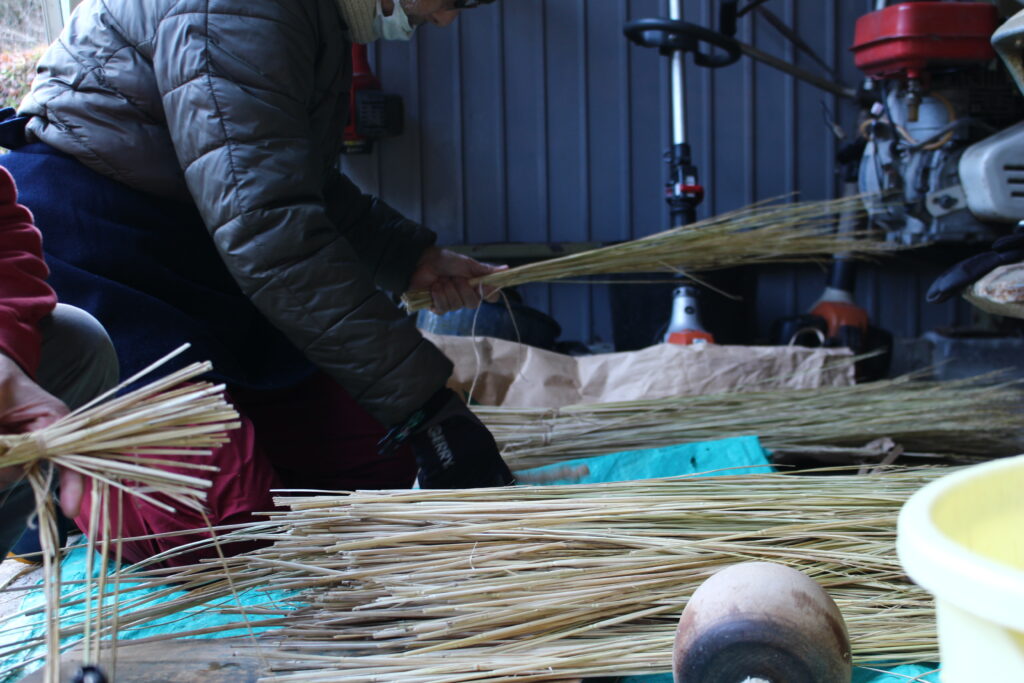
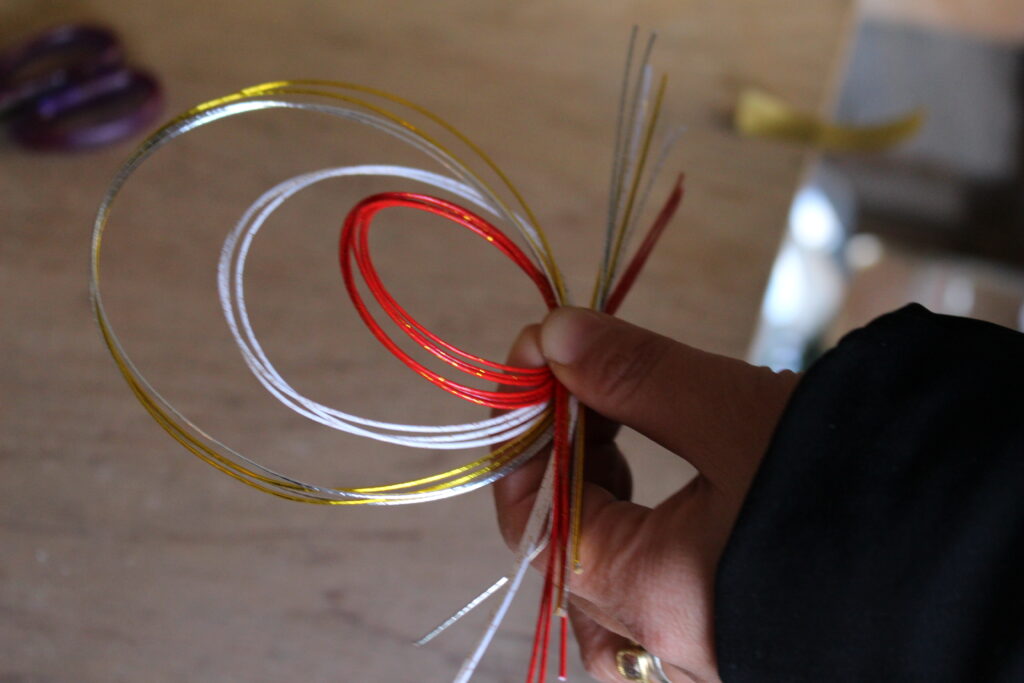
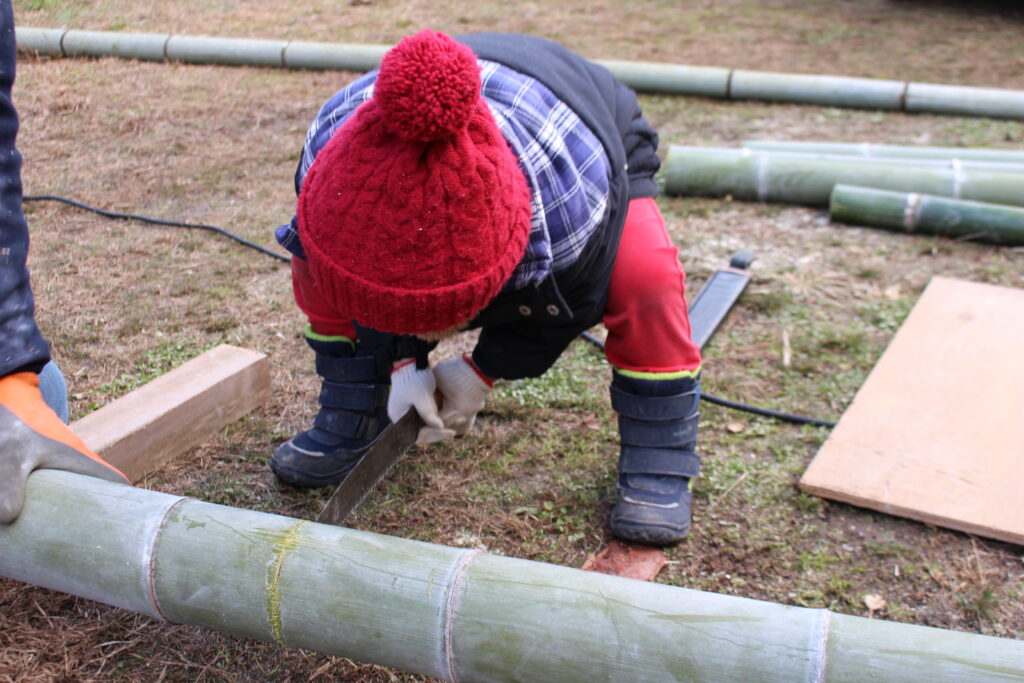
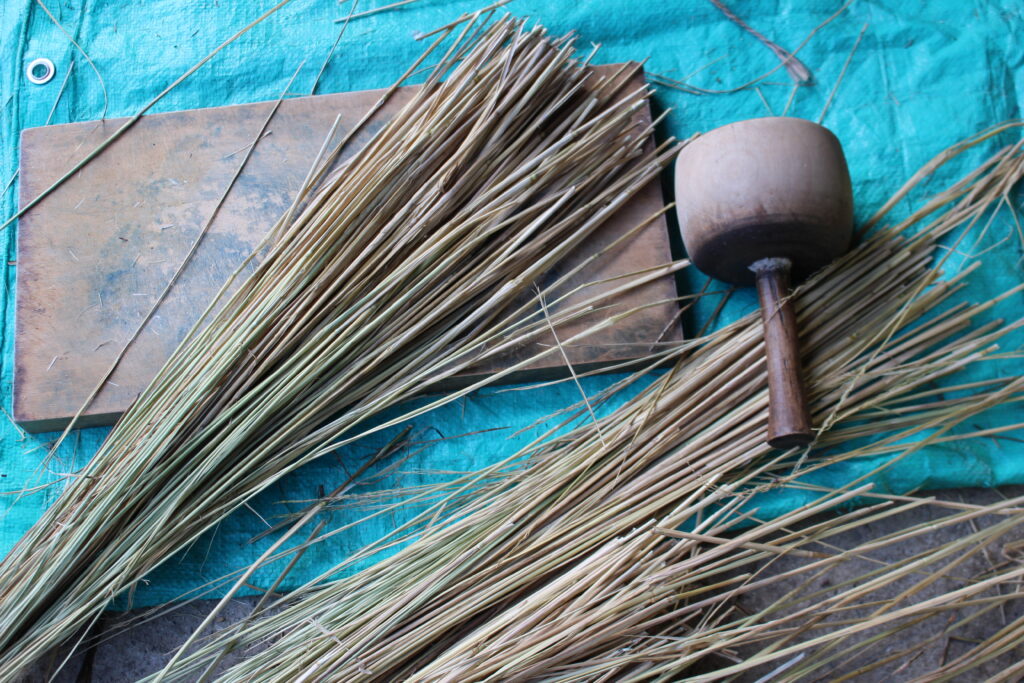
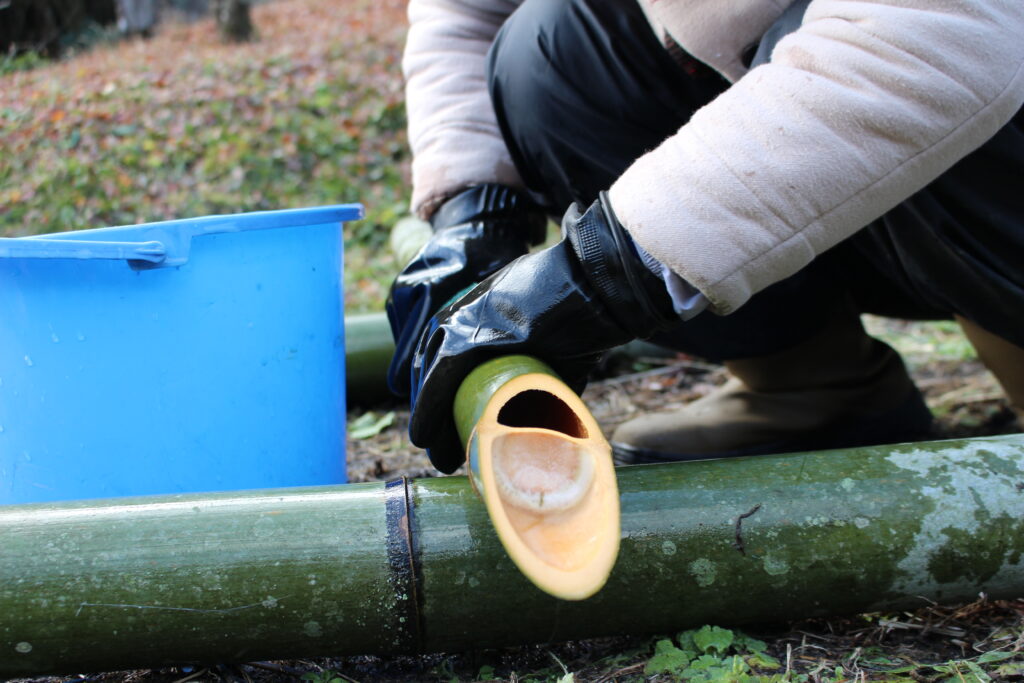
次に手作業で田植から稲刈りをした藁を使った、しめ縄つくりです。出産の際にへその緒を切った時のエピソードとともに教わりました。二本を巻き付けてあるように見えるしめ縄は、三本でなわれているのです。へその緒の中には三本の血管がらせん状に入っていて、しめ縄と同じ構造だと習いました。言葉に出来ないこの神秘を多くの人々に伝える術があれば教えて欲しいものです。
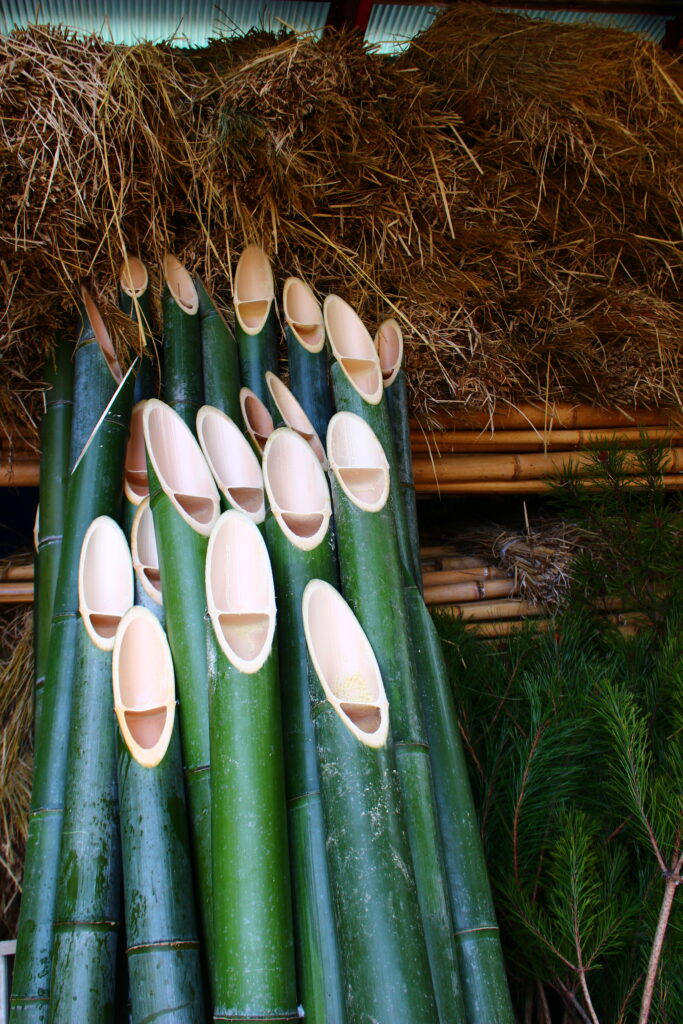
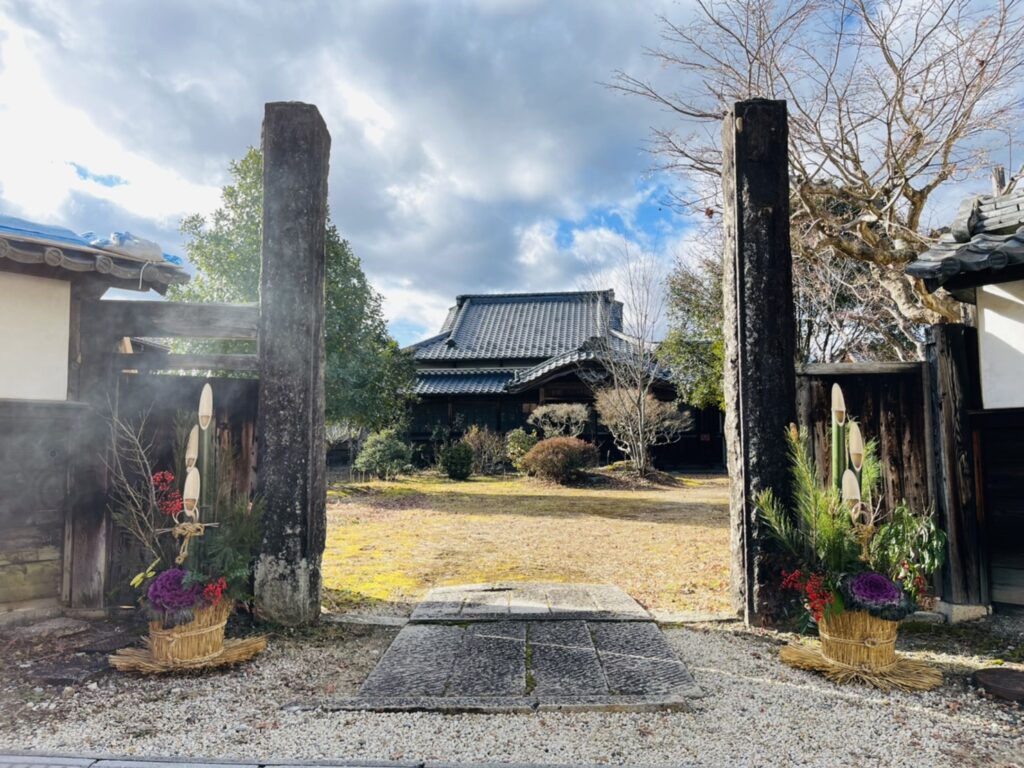

地域で採れた松や竹、梅や南天を飾ることに豊かさを感じます。むかしは当たり前だったことが難しくなっていることが多い昨今、年神様の依代はこの地域で育ったものだけで創られます。また植物は黄金比で成長しています。松葉が広がる角度も、竹の節の間隔も、そして五枚の花びらの梅の花も、すべては完璧に計算された美しさなんですね。今年も年神様が喜んでくださいますように、そして迷われませんように。
Kadomatsu
I participated in a kadomatsu-making event held in the Sakashita district of Nakatsugawa City. Kadomatsu are decorated in front of the gate or at the entrance to welcome the New Year as a symbol of the gods' presence. The beauty of the kadomatsu is fascinating, as each region and craftsman has its own kadomatsu with various shapes and designs.
First, cut bamboos and combine three bamboos to make the base of the kadomatsu. The tips of the bamboos are cut at an angle, as it is said that the god of the year descends on the sharp points. Since it was a cold day, we made a fire in an oil drum to keep warm as we worked. The bamboo was washed with wood ashes made in the drum. The wood ash is alkaline, so it removes oil and dirt from the bamboo.
Next, we made shimenawa (sacred straw ropes) using straw that had been harvested by hand from rice planting. We learned about the episode when the umbilical cord was cut during childbirth. The shimenawa, which looks like two strands wrapped around the umbilical cord, is made of three strands. I learned that the umbilical cord contains three blood vessels in a spiral shape and has the same structure as the shimenawa. If there is a way to convey this inexpressible mystery to as many people as possible, I would like to know about it.
I feel a sense of richness in decorating with pine trees, bamboo, plum trees, and nanten trees that are harvested in the region. What was once commonplace has become difficult these days, but the yorishiro for the god of the year is made from only locally grown plants. Plants grow in the golden ratio. The angle at which the pine needles spread, the spacing of the bamboo joints, and the plum blossoms with their five petals are all perfectly calculated beauty. May the New Year God be pleased with us and may we not be lost this year!
ゑなの結とは
私たちは恵那山のふもとでフリーペーパーを発行している任意団体です。本当の意味で“誰一人取り残されない”のは季節の移り変わりではないでしょうか。また美しい自然から、地域の強みや魅力を教えられているのは、私たちだとも感じています。
心を豊かにするこの地域のひとときを二十四節氣とともに発信。そしてこの地のスタートアップから、インタビューや寄稿を通したコンテンツは、恵那山の頂きより「ヤッホー!」と叫ぶように、多くの人々に届いたらいいなと思っています。
We are a voluntary organization that publishes free papers at the foot of Mt. Ena. Isn't it the change of seasons that truly means that no one is left behind? I also feel that we are the ones who are taught the strengths and charms of the region by the beautiful nature.
We will transmit a moment of this region that enriches the mind with 24 seasons. And I hope that the content through interviews and contributions from startups in this area will reach as many people as possible like shouting "Yo-ho!" from the top of Mt. Ena.
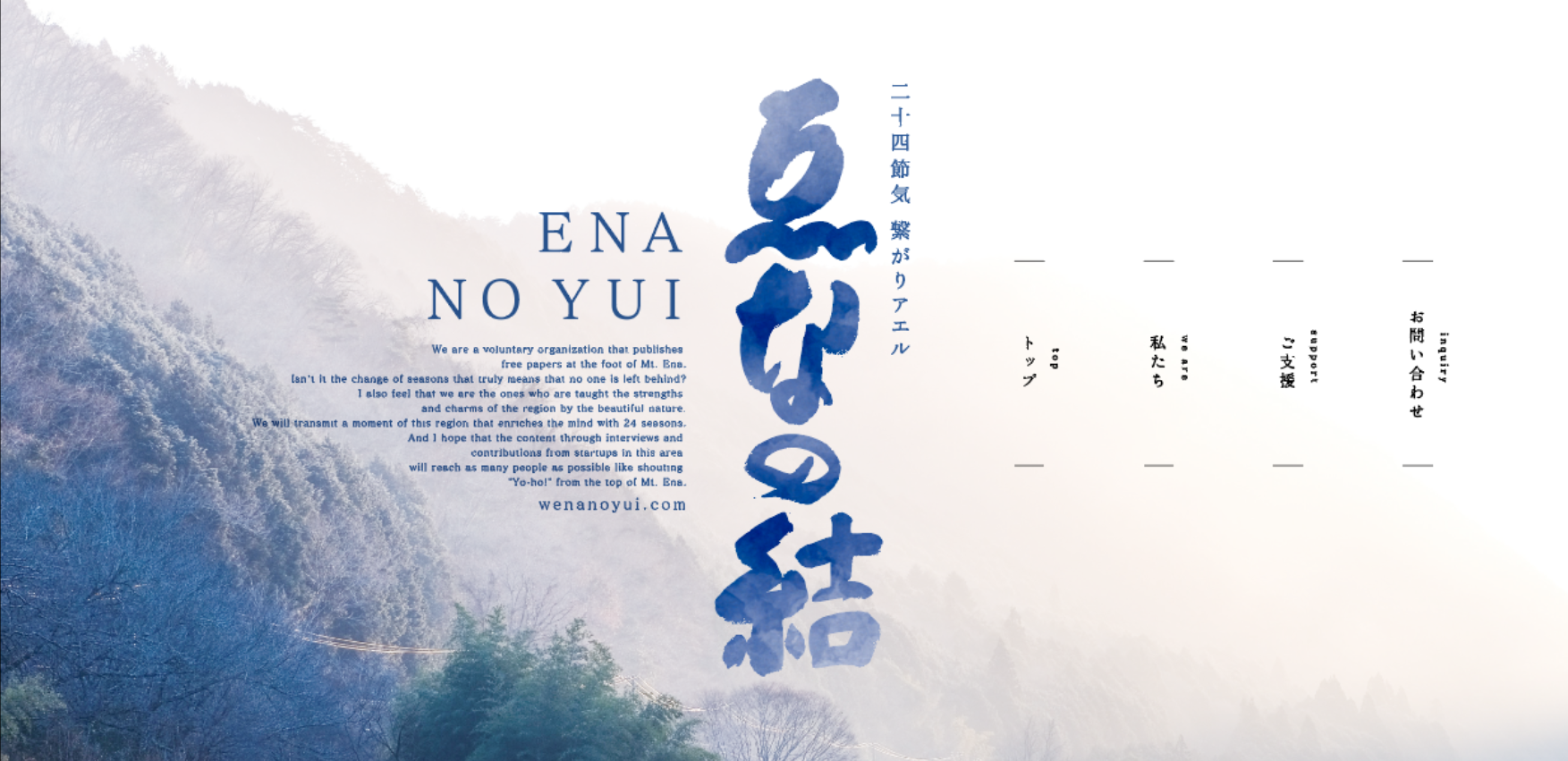



コメント